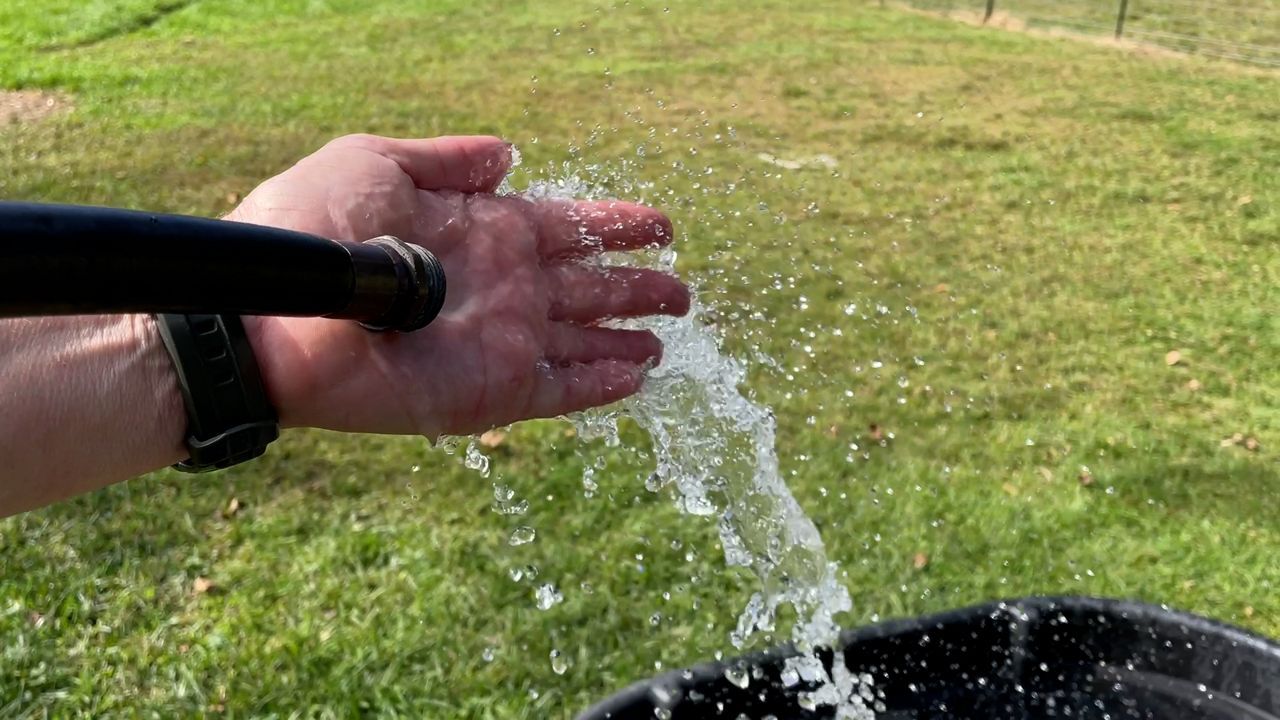Advancements in IoT-Driven Smart Drip Irrigation – Bioengineer.org

Report on IoT-Driven Smart Drip Irrigation and its Alignment with Sustainable Development Goals
Introduction: Advancing Sustainable Agriculture through Technological Innovation
The integration of Internet of Things (IoT) technology into drip irrigation systems represents a significant advancement in agricultural practices, directly supporting the achievement of several United Nations Sustainable Development Goals (SDGs). This report, based on a review by Jaiswal, Kumar, and Shukla, examines the architecture and application of smart drip irrigation, emphasizing its role in fostering sustainable food production, responsible water management, and climate resilience.
Core Technology and Contribution to SDG 9: Industry, Innovation, and Infrastructure
Smart drip irrigation systems are built on a foundation of innovative technology, which is central to SDG 9. The architecture combines hardware and software to create an intelligent, responsive agricultural infrastructure.
System Architecture Components
- Sensors: Soil moisture and climatic sensors gather real-time data on environmental and crop conditions.
- IoT Connectivity: Devices are interconnected, allowing for seamless data transmission and remote management.
- Data Processing: Machine learning algorithms and edge computing analyze data to predict crop needs and automate irrigation schedules.
- Controllers: Automated valves and pumps precisely control the application of water based on data-driven decisions.
This technological framework enhances agricultural infrastructure, promoting innovation that makes farming more efficient and productive.
Impact on Water and Food Security: Addressing SDG 6 and SDG 2
The primary benefit of smart drip irrigation is its capacity to optimize resource use, which is critical for achieving SDG 6 (Clean Water and Sanitation) and SDG 2 (Zero Hunger).
Contributions to Key SDGs
- SDG 6: Clean Water and Sanitation: By delivering water directly to the plant’s root zone in precise amounts, the system drastically reduces water waste compared to traditional methods. This promotes sustainable water management in agriculture, the world’s largest consumer of freshwater.
- SDG 2: Zero Hunger: Enhanced water efficiency and optimized growing conditions lead to improved crop health and higher yields. This increased productivity strengthens food security and supports the goal of ending hunger.
Fostering Responsible Production and Climate Action: Aligning with SDG 12 and SDG 13
The data-driven nature of smart irrigation supports sustainable production patterns and enhances agriculture’s resilience to climate change, aligning with SDG 12 and SDG 13.
Mechanisms for Sustainability and Resilience
- SDG 12: Responsible Consumption and Production: The technology enables precision agriculture, ensuring that resources like water and energy are used efficiently. This minimizes the environmental footprint of farming and promotes sustainable production cycles.
- SDG 13: Climate Action: Smart systems allow farmers to adapt proactively to changing weather patterns and water scarcity, which are exacerbated by climate change. By conserving water and energy, these systems also contribute to climate change mitigation.
Challenges and the Imperative for Collaborative Action under SDG 17
Despite its potential, widespread adoption of smart drip irrigation faces several barriers. Overcoming these challenges requires collaborative efforts, as highlighted by SDG 17 (Partnerships for the Goals).
Barriers to Implementation
- High Initial Costs: The investment required for sensors, controllers, and connectivity can be prohibitive for small-scale farmers, particularly in developing regions.
- Technical Proficiency: Operating and maintaining these systems requires new skills and training.
- Infrastructure Gaps: Reliable internet connectivity is essential for IoT functionality but is often lacking in rural areas.
The Role of Partnerships (SDG 17)
To ensure equitable access and maximize the benefits of this technology, collaborative initiatives are essential. Partnerships between technology developers, policymakers, agricultural institutions, and farmers can:
- Drive research to lower costs and improve user-friendliness.
- Develop training and educational programs to build local capacity.
- Advocate for policies that support the development of rural digital infrastructure.
Conclusion: A Pathway to a Sustainable Food Future
Smart drip irrigation systems powered by IoT and machine learning are pivotal innovations for modern agriculture. Their capacity to enhance resource efficiency, boost productivity, and build climate resilience directly contributes to achieving multiple Sustainable Development Goals. By fostering collaboration and addressing existing barriers, the global community can harness this technology to secure a sustainable and food-secure future for all.
Analysis of Sustainable Development Goals in the Article
1. Which SDGs are addressed or connected to the issues highlighted in the article?
-
SDG 2: Zero Hunger
- The article discusses how smart drip irrigation enhances “yield and sustainability,” “improves crop health,” and enhances “crop productivity.” These outcomes are directly linked to ensuring food security and promoting sustainable agriculture.
-
SDG 6: Clean Water and Sanitation
- The primary focus of the article is on water management. It emphasizes that smart drip irrigation “lowers water waste,” promotes “efficiency” in water application, and helps “refine water usage,” which are central to the sustainable management of water resources.
-
SDG 9: Industry, Innovation, and Infrastructure
- The article is centered on technological innovation, specifically the “integration of Internet of Things (IoT) technologies,” “machine learning models,” and sophisticated “sensors and controllers” in agriculture. This represents an upgrade of agricultural infrastructure and promotes scientific research.
-
SDG 12: Responsible Consumption and Production
- The technology promotes the “efficient use of natural resources,” particularly water. By ensuring that water usage is aligned with precise crop requirements, the system supports sustainable production patterns and “significantly enhanced resource management.”
-
SDG 13: Climate Action
- The article notes that smart irrigation systems help farmers “respond proactively to environmental challenges” and manage resources in an “era defined by climate change.” The technology’s ability to adapt to “changing weather patterns” strengthens agriculture’s resilience to climate-related hazards.
-
SDG 17: Partnerships for the Goals
- The article explicitly calls for collaboration, stating it is “imperative to foster dialogue between farmers, technology developers, and policy-makers.” It highlights the need for “collaborative initiatives” and “partnerships with agricultural universities” to drive down costs and broaden access to the technology.
2. What specific targets under those SDGs can be identified based on the article’s content?
-
Target 2.4: By 2030, ensure sustainable food production systems and implement resilient agricultural practices that increase productivity and production.
- The article directly supports this target by describing how smart irrigation leads to “sustainable agricultural practices” that “enhance crop productivity” and “improve crop health.”
-
Target 6.4: By 2030, substantially increase water-use efficiency across all sectors and ensure sustainable withdrawals and supply of freshwater to address water scarcity.
- The article’s core theme is improving water efficiency. It details how the technology is “tailored to optimize water application,” which “lowers water waste” and leads to more efficient water use in the agricultural sector.
-
Target 9.5: Enhance scientific research, upgrade the technological capabilities of industrial sectors in all countries, in particular developing countries.
- The article reviews “advancements in IoT and machine learning” and discusses the “architecture of smart drip irrigation systems,” which represents an upgrade of technological capabilities in agriculture. The mention of challenges in “developing regions” connects directly to the target’s scope.
-
Target 12.2: By 2030, achieve the sustainable management and efficient use of natural resources.
- The article explains how sensor-driven data allows farmers to make “informed, data-driven irrigation decisions that align water usage with crop requirements,” leading to “significantly enhanced resource management” and the efficient use of water.
-
Target 13.1: Strengthen resilience and adaptive capacity to climate-related hazards and natural disasters in all countries.
- The article describes a dynamic system that “evolves with changing weather patterns” and helps farmers “respond proactively to environmental challenges,” thereby strengthening the agricultural sector’s resilience to climate change impacts like resource scarcity.
-
Target 17.17: Encourage and promote effective public, public-private and civil society partnerships, building on the experience and resourcing strategies of partnerships.
- The article concludes by emphasizing the need for “collaborative initiatives” and “dialogue between farmers, technology developers, and policy-makers” to ensure the benefits of the technology can be “enjoyed by all.”
3. Are there any indicators mentioned or implied in the article that can be used to measure progress towards the identified targets?
-
Indicator for Target 2.4: Proportion of agricultural area under productive and sustainable agriculture.
- The article implies this can be measured by tracking the increase in “crop yield” and “crop productivity” on farms that adopt these “sustainable farming practices.”
-
Indicator for Target 6.4: Change in water-use efficiency over time (Indicator 6.4.1).
- The article directly implies this indicator by focusing on “optimizing water usage,” “reducing water waste,” and overall “irrigation efficiency.” Progress could be measured by the volume of water saved per unit of agricultural output.
-
Indicator for Target 9.5: Research and development expenditure as a proportion of GDP (Indicator 9.5.1).
- While not mentioning GDP, the article implies progress through the level of “research and development” in IoT and machine learning for agriculture, as exemplified by the cited research paper, and the rate of “adoption of these systems” by farmers.
-
Indicator for Target 12.2: Material Footprint, Material Footprint per capita, and Material Footprint per GDP (Indicator 12.2.1).
- The article implies a more specific indicator: the efficiency of natural resource use. This could be measured by the reduction in water consumption (a key natural resource) per hectare of cultivated land.
-
Indicator for Target 13.1: Number of countries with national and local disaster risk reduction strategies (Indicator 13.1.2).
- At a micro-level, an implied indicator is the number of farms or the total agricultural area utilizing climate-adaptive technologies like smart irrigation, which contributes to national resilience strategies.
-
Indicator for Target 17.17: Amount of United States dollars committed to public-private and civil society partnerships (Indicator 17.17.1).
- The article implies measuring progress by the number of “collaborative initiatives” and “partnerships” formed between farmers, tech developers, universities, and policymakers to advance smart agriculture.
4. Summary Table of SDGs, Targets, and Indicators
| SDGs | Targets | Indicators |
|---|---|---|
| SDG 2: Zero Hunger | 2.4: Ensure sustainable food production systems and implement resilient agricultural practices. | Increased crop yield and productivity on farms adopting smart irrigation. |
| SDG 6: Clean Water and Sanitation | 6.4: Substantially increase water-use efficiency across all sectors. | Change in water-use efficiency, measured by reduced water waste and optimized water application per unit of crop output. |
| SDG 9: Industry, Innovation, and Infrastructure | 9.5: Enhance scientific research and upgrade technological capabilities. | Rate of adoption of IoT and machine learning systems in agriculture; level of research and development in smart irrigation technologies. |
| SDG 12: Responsible Consumption and Production | 12.2: Achieve the sustainable management and efficient use of natural resources. | Efficiency of water resource management, measured by aligning water usage with precise crop requirements. |
| SDG 13: Climate Action | 13.1: Strengthen resilience and adaptive capacity to climate-related hazards. | Number of farms or agricultural areas implementing climate-adaptive technologies like smart irrigation to manage changing weather patterns. |
| SDG 17: Partnerships for the Goals | 17.17: Encourage and promote effective public, public-private and civil society partnerships. | Number of collaborative initiatives and partnerships formed between farmers, technology developers, and policymakers. |
Source: bioengineer.org
What is Your Reaction?
 Like
0
Like
0
 Dislike
0
Dislike
0
 Love
0
Love
0
 Funny
0
Funny
0
 Angry
0
Angry
0
 Sad
0
Sad
0
 Wow
0
Wow
0














































.jpg.webp?itok=0ZsAnae9#)







:focal(1500,1000)/https://media.globalcitizen.org/a6/9a/a69a4720-d8a1-4715-b596-18738d03c05c/rotary_polio_hero_image.jpg?#)

/countries/sri-lanka/photo-credit---dmc-sri-lanka.tmb-1200v.jpg?sfvrsn=dc298bcc_1#)


















